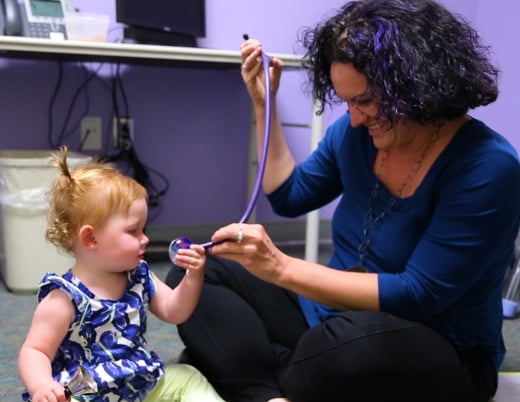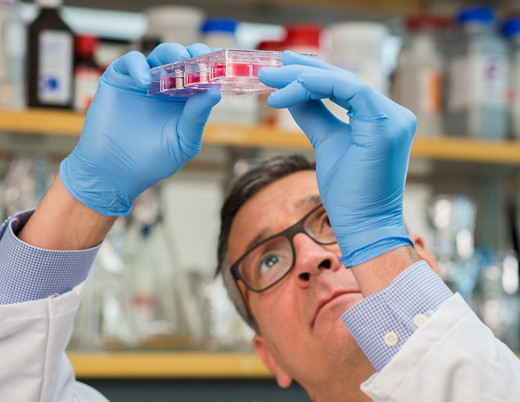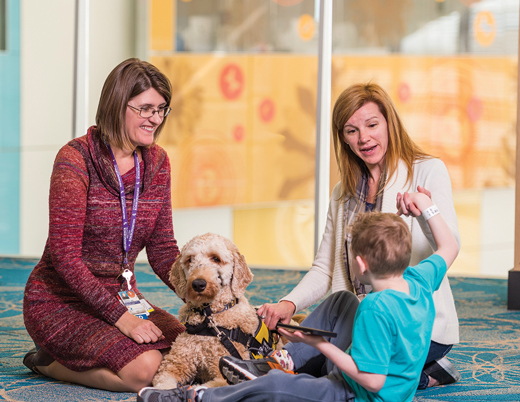Could whole-exome sequencing link a mysterious phenotype to a genetic cause?
The patient was 9 months old when she was transferred to Children’s Hospital Colorado with a severe respiratory infection and a complete inability to produce antibodies. Whatever it was, it ran in the family: The patient’s father, paternal grandfather and aunt all shared faulty antibody production.
Over the coming months, the patient was diagnosed with a rare infection known as Pneumocystis jirovecii pneumonia, most often seen in immunocompromised patients – but not usually in patients solely with antibody production issues. Remarkably, the patient’s paternal grandfather and aunt had contracted the same infection.
“Our interest is solving these mystery cases,” says immunologist Cullen Dutmer, MD, part of a group of researchers on the Anschutz Medical Campus dedicated to identifying new disorders and describing novel processes of known ones. “We now have funds to look expansively through the genome to generate answers for these families.”
Finding the clues
In this family’s case, Dr. Dutmer’s first stabs at a sequencing panel didn’t yield an answer. But he had a potential clue. A link between antibody production issues and susceptibility to Pneumocystis jirovecii pneumonia had recently been described in individuals harboring mutations in genes encoding Ikaros zinc finger transcription factors, key regulators of immune cell development.
Dr. Dutmer knew someone with a clinical interest in just that: Sergio Rosenzweig, MD, PhD, chief of Immunology Service at the National Institutes of Health’s Clinical Center, who’d described a unique mutation in a gene called IKZF1.
“That mutation resulted in low production of antibodies and susceptibility to Pneumocystis jirovecii pneumonia, so this family’s clinical phenotype looked a lot like what he’d described,” Dr. Dutmer says. “I reached out to Sergio to work on whole-exome sequencing together and see if we could identify some candidate genes.”
“Turns out that was a good choice,” he adds.
Gene sequencing
Through sequencing, Drs. Dutmer and Rosenzweig identified a mutation in a gene similar to IKZF1, in this case the gene IKZF3. In fact, Dr. Rosenzweig was already collaborating with a group in Japan, which had developed a murine model to assess the impact of mutations in the IKZF3 gene.
“So we were able to use that model and cells from this family to prove this mutation disrupts the ability of the T and B cell to function properly,” Dr. Dutmer says. “The B cells are there, but they can’t produce antibodies.”
They published the study in the Journal of Experimental Medicine in December 2021.
From diagnosis to Pneumocystis jirovecii pneumonia treatment
For Dr. Dutmer’s 9-month-old patient, now 2 years old, the diagnosis means a more informed course of treatment — including prophylactic treatment for Pneumocystis jirovecii pneumonia, which had previously been a life-threatening infection for her. Another possible option: bone marrow transplant, which could potentially be curative.
Of additional interest, for Dr. Dutmer, is the paternal aunt’s history of chronic lymphocytic leukemia, or CLL, diagnosed at a relatively young age. Given that history and a known link between somatic IKZF3 mutations and CLL, there’s a good argument for increased vigilance against CLL in family members who have the mutation.
“As we start to find more patients who have this mutation, I think that’s going to confirm this association,” says Dr. Dutmer. “And I can guarantee you more patients will be found. We’ll just have to see where they are.”
Featured Researchers

Cullen Dutmer, MD
Medical Director
Clinical Immunology
Children’s Hospital Colorado
Assistant professor, Pediatrics-Allergy and Immunology
University of Colorado School of Medicine





 720-777-0123
720-777-0123










